This morning Mark and I drove down to Savage for our orientation with Sidney Sugar. We met on site at the field where we’ll be working. I had thought that everyone who came to Sidney would be sent to this work area, but apparently there are three sites near Sidney. There were only a handful of us in Savage.
Our first order of business was to be issued our gear and to sign several papers in the scale house. When everyone had been given their stuff, a tall, slender man drew us all together and welcomed us. He is the boss over our boss, but he has charge of all the sites within about one hundred miles, so we may not see him very often. He said no one is going to yell at us unless we are being unsafe on the job, and he said he wants it to be fun for us. He said they’ll even bring coffee and hot chocolate out to us in the mornings. He seems nice.
Then he gave us our assignments. Rather than driving skid steer, he asked Mark to be a piler operator; and rather than being a piler operator, he asked me to be a tare helper. That means I’ll be the one drawing samples. We all moved to the other end of the field to learn our jobs.
Mark and I are working on Piler 1. We’re number 1! Yah!!
The guy who’s going to be working on Piler 3 has done it before, so he was sent to train Mark, and a woman who has been a Tare Helper before was sent to train me. Mark will be in charge of two of us helpers. When he’s about to turn the piler on he’ll hit an alarm once, and when he’s actually going to turn it on he hits the alarm three times. Then he turns on the hydraulic pumps, hits the power button, and starts the machinery. A truck will drive onto the ramp next to him and I will go up to the truck window and get the ticket they were given at the scale house. If it’s the size of a business card, I put it in a box in my area, but if it’s longer it means a sample needs to be taken.
In the meantime, Mark lifts the front ramp so that it forms a trough. The farmer then lifts the bed of his dump truck and the beets fall onto a conveyor belt that takes them up into the machine. As the beets go out on the long arm conveyor belt, the dirt and mud is shaken from them and reserved by the piler. If a sample is to be taken, I put a tare bag on the end of a Shute and about half way through the dump, I push a handle that drops a bucket down into the beets as they drop onto the long arm conveyor belt. After two or three seconds I pull the handle back up and the bucket comes up to a position where the sample beets roll down my Shute and into the tare bag. I take the ticket the driver gave me, put it in a pocket on the outside of the bag, and put the bag on a trailer to be carted away to the lab.
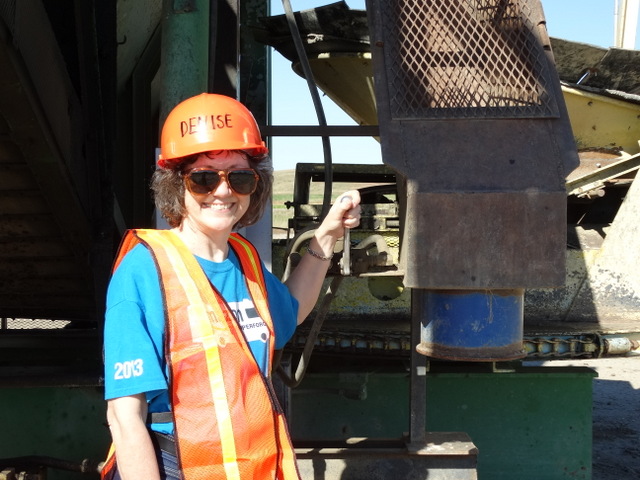
The handle I use to control the sample bucket. The tare bag goes around the blue opening at the bottom.
When the truck is done dropping it’s load, it repositions itself in front of me, and with big motions I direct the truck under another conveyor belt which Mark will turn on so that all that reserved dirt and mud can be put back into the truck. Then the truck goes back to the scale house to be weighed again, and the difference between the two weights is the weight of the beets.
Another part of my job will be to watch for any problems. The long arm conveyor starts in a low position, but as the pile of beets grows, Mark will angle the arm higher. I’m in a better position to see if the pile is getting too high for the arm position, so I signal to Mark that it’s time to lift the arm. Or, if the arm has gone as high as it can and the pile is up to it, it’s time to stop the machine and back up about three feet. I’m the one who marks the three feet and signals Mark how far to come back.
Another potential problem is if one of the chains on the machine breaks, or if someone gets caught in the machinery or something. If it’s not an immediate danger, I signal Mark to turn the machine off. If it is an immediate danger, there’s an emergency stop button I can press that will stop the machine cold.
Every so often, Mark will need to turn the machine off and we will all lock it down by putting the padlocks issued to us on it. When it is locked so that it can’t be started, we will get hoes and start cleaning all the mud and crud out of the machine. Also, there is a young local guy who has been hired as a “greaser”. He takes turns with the three pilers, re-greasing all the parts inside and outside that need greasing. While he’s inside greasing ours, I guess we take a break or go have lunch.
I had first heard that we’d be starting on October 1, but we were told today that we’ll be starting on September 30. That is, if the weather permits. I guess Sunday we’re supposed to have three inches of rain, and Monday and Tuesday may be rainy too. We have a phone number we can call on days when the weather is bad to see if we’ll be working or not. Considering we have another job to get to, I hope there won’t be too many days off.
I thought I’d also include a couple pictures of where we’re living before I close for today:

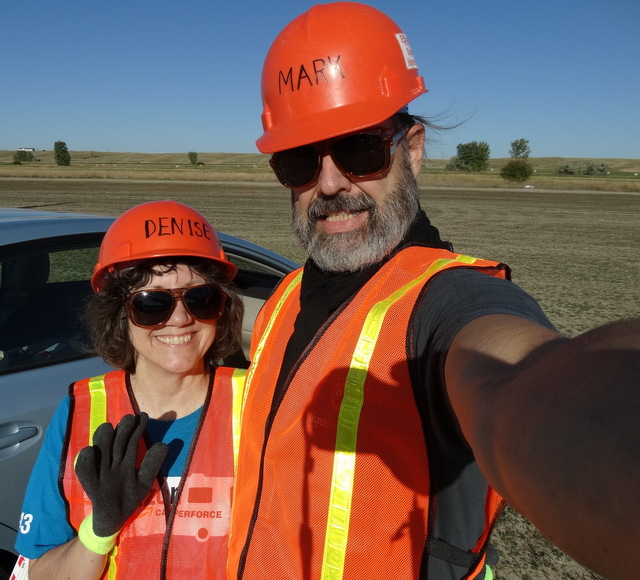
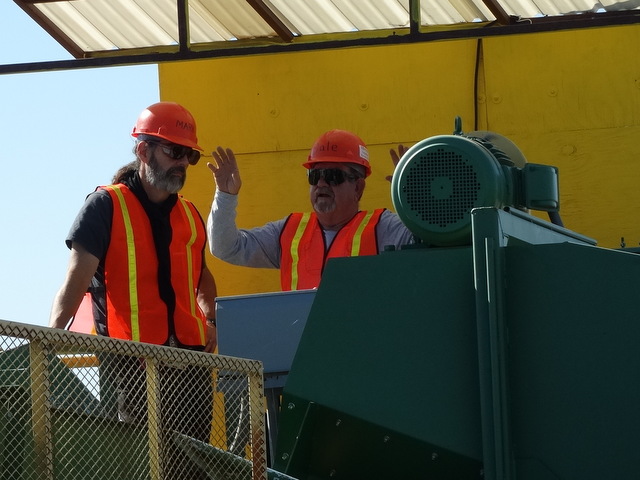
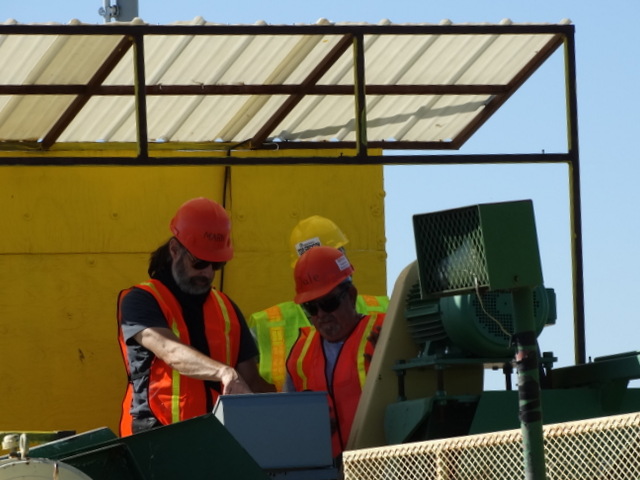
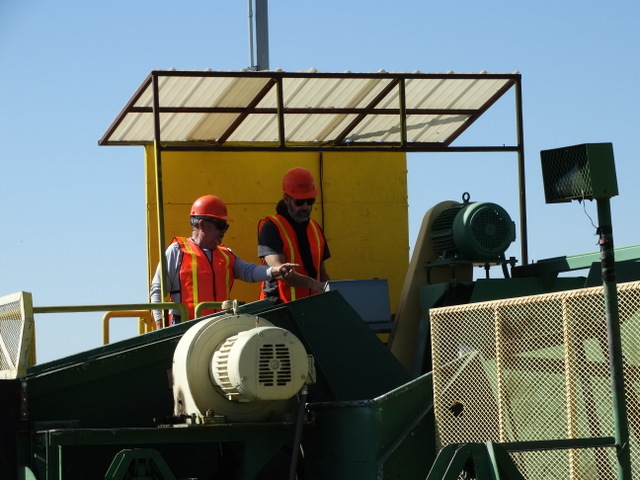
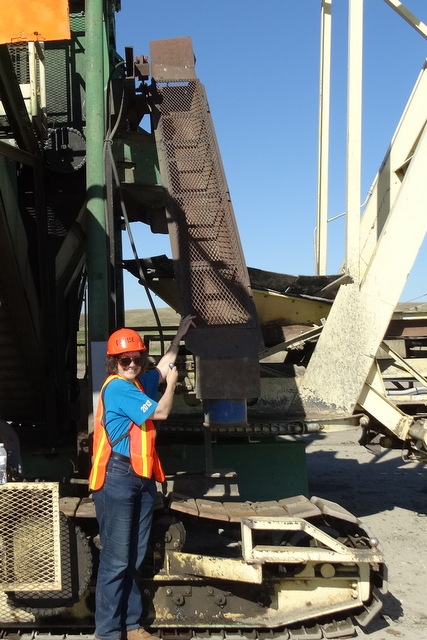
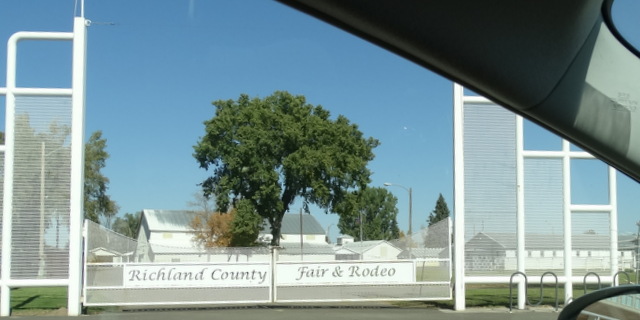
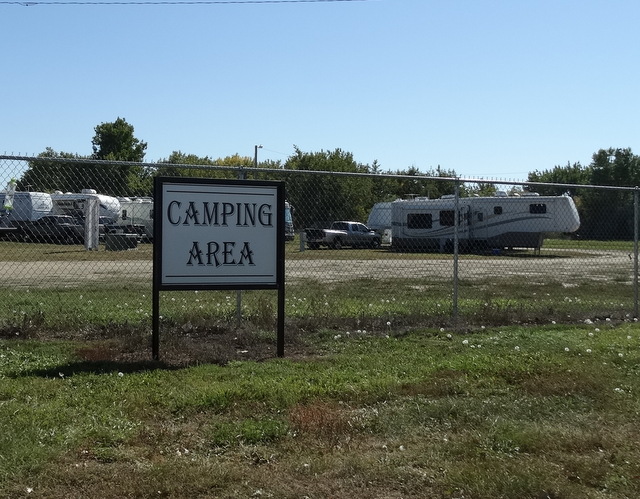
Love that smile on you and I love that you and your hubby are exploring life to the fullest!
Hugs,
Denise 🙂